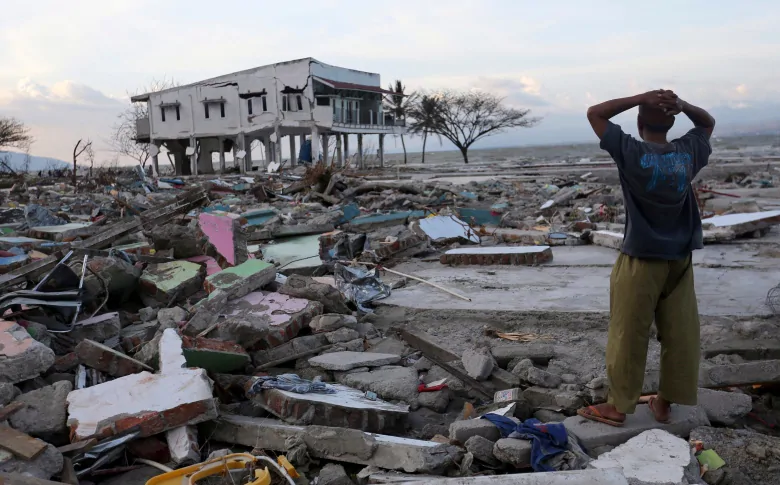STORY BY DANIEL SAENZ
Recently, a massive earthquake with a magnitude of 7.5 hit Indonesia’s Sulawesi which in turn, unleashed a tsunami. The earthquake was devastating and as of now, has killed over two thousand people while over five thousand people are missing and yet to be found. Over three thousand homes have been destroyed by the mud and debris since the 7.5 magnitude waves hit the island.
According to recent statements by the government, search operations will cease on Thursday which means that the missing people will be declared dead. The United States has sent in a team of relief workers along with over two thousand rolls of plastic to help create emergency shelters for over one hundred thousand people. Over 20 other countries have sent in aid of some kind.
As of yesterday, the Indonesian government has instructed independent aid workers to leave the disaster zone. Along with some of the initially accepted foreign aid, domestic government efforts have included 37 million dollars invested in aid relief. Unfortunately, such events are not at all new to Indonesia as an Earthquake hit the Lombok island in September with a series of earthquakes preceding it in July and August.
When contacted for comment Dr. Jonathan Sumrall, a professor of Geology as well as Director for the Geology Field Camps at Fort Hays State, gave a brief explanation of why Indonesia is so prone to earthquakes.
“Indonesia is a series of tropical islands in Southeast Asia. These islands are the product of intense geologic forces, making the region highly unstable,” said Sumrall. “There are over 400 volcanoes found on these islands and earthquakes occur frequently. For example, between 1972 and 1991, 29 volcanic eruptions were recorded by the global earthquake network.
“Most of the islands of Indonesia have a volcanic origin associated with the subduction of portions of earth’s crust creating a feature called a trench. During subduction, slabs of the crust are melted, and those melted materials move upward towards the surface. Eventually, this molten material erupts as lava and other volcanic products on the surface. Subduction is the reason that Indonesia has so many earthquakes as well.
“The type of earthquake that occurred on September 28th was due to subduction. The crust that is being pushed underneath gets bound up due to friction between rocks. The energy that causes subduction builds up, and eventually, the energy causes the crust to rupture. This rupture releases energy called seismic waves. The generation of these seismic waves also may cause the seafloor to be displaced or moved. Tsunamis are the result of earthquakes that caused the seafloor to move by seismic wave motion. “
Sumrall also warned of the future outlook of the Indonesia region regarding events such as this.
“Indonesia will continue to have earthquakes and the hazards associated with living near a subduction zone. Unfortunately, the warning signs for earthquakes are poorly understood and often lead to false predictions,” said Sumrall. “The prediction of tsunamis is a little better; however, it depends on how far the earthquake that generates the tsunami occurs off the coast. In the image below, the closer to the earthquake (star) the shorter the notice. In the case of the September 28th earthquake, the location of the earthquake only gave minutes for earthquake victims to prepare for a tsunami, leaving many of them in danger.”

Once the science behind these kinds of events has been established, a political debate about the solution often arises.
In particular, the new scientific hot topic has been renewable technology. The rationale behind this technology is that it will help reduce carbon emissions which will, in turn, help lessen the occurrence and effects of natural disasters.
Greensburg Kansas, for example, attempted to implement this after a tornado leveled the city. Elon Musk has even pushed for this in places such as Puerto Rico following their recent devastating hurricane.
When asked to comment on the likelihood of Indonesia implementing such technology, Dr. Sumrall stated, “I cannot comment on the future of Indonesia with respect to renewable technology.” All in all, it appears that Indonesia’s future is uncertain, to say the least.

